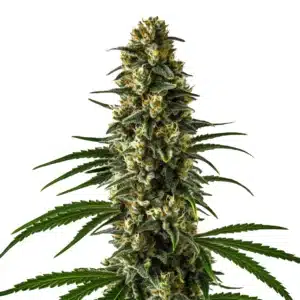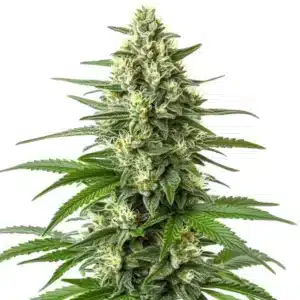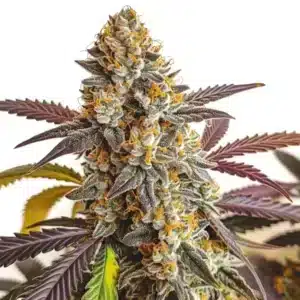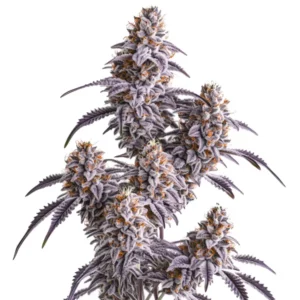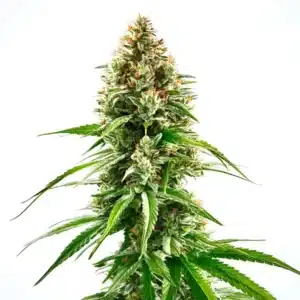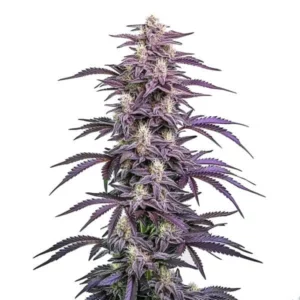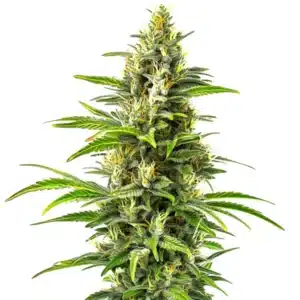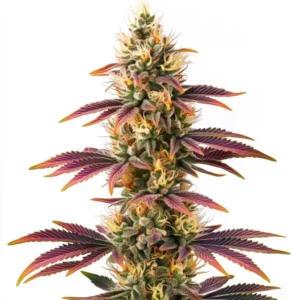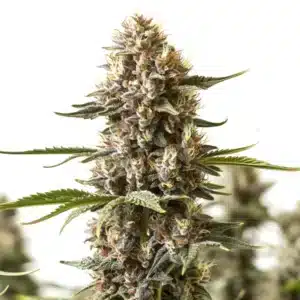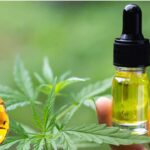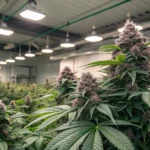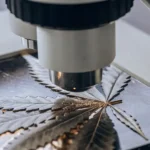
Cannabis Photobiology Explained
Delving into the science of light and plants, cannabis photobiology offers fascinating insights. This field examines how cannabis plants harness light to grow and thrive. For growers, it’s an essential area of study, guiding decisions on lighting setups and schedules.
Photobiology focuses on the interaction between light and living organisms. With cannabis, this means knowing how different light spectrums affect growth stages. From seedling to harvest, light plays a pivotal role in a plant’s life cycle. Learning these details can make a significant impact on your cultivation outcomes.
Recommended Strains
Girl Scout Cookies
|
|
THC | 18% - 25% (Medium) |
|
|
Type | Feminized |
|
|
Yield | High |
|
|
Phenotype | 60% Indica / 40% Sativa |
Gelato
|
|
THC | 27% (High) |
|
|
Type | Feminized |
|
|
Yield | High |
|
|
Phenotype | 50% Indica / 50% Sativa |
When pondering cannabis photobiology, think about how light affects the plant at a cellular level. Light absorption is crucial for photosynthesis, the process where plants convert light energy into chemical energy. This energy fuels growth and impacts yields, making light a vital consideration for any grower.
Impact of Light Spectrum on Cannabis Growth
Different phases of cannabis growth require varied spectrums of light. Seedlings and clones thrive under blue light, which supports root development and dense growth. As plants transition to flowering, red light becomes more significant, encouraging budding and increased yields.
Light spectrum analysis is crucial for optimizing growth conditions. By knowing how each spectrum influences the plant, growers can tailor their lighting systems. This knowledge leads to healthier plants and potentially higher yields. For instance, using full-spectrum LED lights can mimic natural sunlight, providing a balanced light source throughout the growing cycle.
Expanding on cannabis photobiology scientific research, it’s evident that light spectrum manipulation can profoundly affect plant morphology and chemical composition. Researchers continue to explore how specific wavelengths can enhance or suppress certain plant characteristics, providing growers with tools to refine their cultivation strategies.
Moreover, the impact of light spectrum on cannabis growth extends to pest control. Certain light spectrums may deter pests or inhibit their development, reducing the need for chemical interventions. This environmentally friendly approach underscores the benefits of knowing cannabis photobiology explained through the lens of sustainable agriculture.
Knowing Cannabis Plant Light Absorption
Light absorption in cannabis plants is a sophisticated process. Chlorophyll, the green pigment in leaves, captures light, primarily in the blue and red wavelengths. This absorbed light powers photosynthesis, crucial for plant growth and energy production.
Efficient light absorption maximizes photosynthesis, leading to vigorous growth. However, not all light is absorbed equally. Reflective surfaces and optimal positioning of light sources can enhance absorption, ensuring that plants receive the maximum benefit from available light.
Knowing cannabis plant light absorption also involves considering the impact of environmental factors such as humidity and temperature. These elements can influence the efficiency of light capture, making it essential for growers to maintain optimal conditions in their grow environments.
Incorporating advancements in technology, growers can now utilize smart systems that adjust lighting based on real-time plant needs. These innovations represent a leap forward in cannabis photobiology explained, allowing for precise control over light absorption and plant health.
Promos & Deals
Photobiological Effects on Cannabis Yield
The effects of photobiology on cannabis yield are profound. By manipulating light, growers can influence plant size, shape, and potency. Increased light exposure, when managed correctly, often leads to enhanced yields and more potent buds.
A practical approach is to gradually increase light intensity as plants mature. This method allows plants to acclimate and utilize the light efficiently, promoting robust growth and higher yields. Strains like Girl Scout Cookies thrive under such carefully managed conditions.
Photobiological effects on cannabis yield aren’t limited to the quantity of the harvest. Light manipulation can also enhance the quality of cannabinoids and terpenes, essential compounds that define a strain’s unique profile. This highlights the importance of precise light management throughout the growth cycle.
Knowing the function of light in stress management is another facet of cannabis photobiology explained. By controlling light exposure, growers can reduce plant stress, which in turn can lead to more resilient plants capable of achieving optimal yields even under challenging conditions.
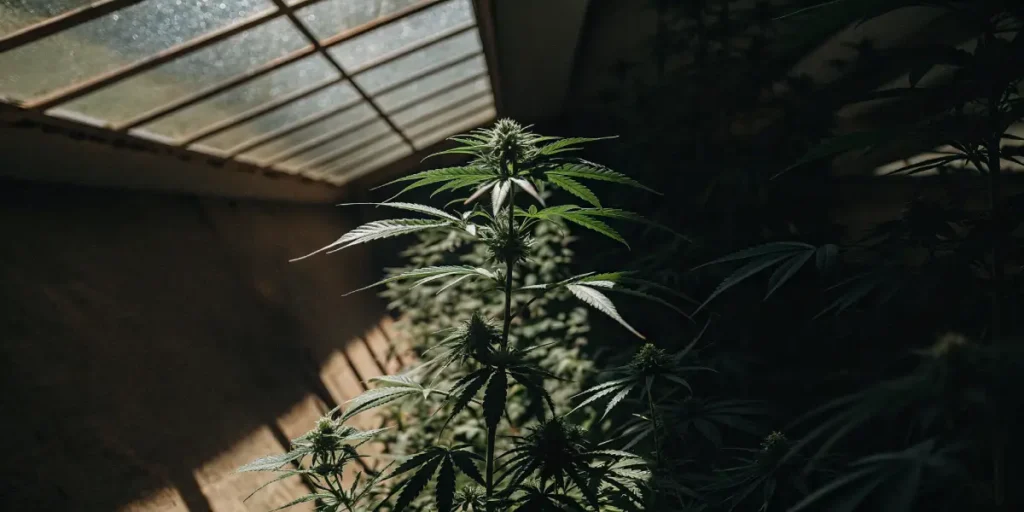
Cannabis Cultivation Light Spectrum Analysis
Conducting a light spectrum analysis helps in knowing the specific needs of cannabis plants. This analysis involves examining the light environment and adjusting it to suit the plant’s growth stage. By doing so, growers can maximize the plant’s potential.
For instance, during the vegetative stage, a high blue light spectrum supports leaf and stem development. In contrast, during flowering, a shift to red enhances bud production. Strains like Gelato may exhibit improved characteristics when exposed to a well-balanced spectrum.
Advanced cannabis cultivation light spectrum analysis tools offer growers unprecedented insight into their grow environments. With these devices, growers can identify and correct any imbalances, optimizing conditions for each growth stage and ensuring the best possible outcomes.
Implementing findings from cannabis photobiology scientific research, cultivators can now fine-tune their setups to meet the precise light requirements of each strain. This customization is crucial for achieving the desired potency and yield while maintaining plant health and vigor.
FAQs on Cannabis Photobiology Explained
What is Cannabis Photobiology?
Cannabis photobiology is the study of how cannabis plants interact with light. It explores how different light spectrums affect plant growth, development, and yield. By knowing these interactions, growers can optimize their lighting setups to improve plant health and productivity.
This field draws from scientific research to inform cultivation practices. Growers who apply knowledge from photobiology can tailor light conditions to suit different growth stages. This customization can lead to better plant performance and higher-quality yields.
As cannabis photobiology scientific research advances, new insights continue to emerge, offering growers innovative methods to enhance their cultivation practices. These discoveries provide the foundation for more efficient and sustainable growing techniques.
Ultimately, cannabis photobiology explained through empirical data and practical application empowers growers to maximize their harvests. This approach integrates the latest scientific findings with traditional cultivation wisdom, resulting in a more holistic growing strategy.
How Does Light Spectrum Affect Cannabis Growth?
The light spectrum significantly influences cannabis growth. Blue light is crucial during the vegetative phase, encouraging strong root and stem development. Red light becomes important during flowering, promoting bud formation and maturation.
By analyzing the light spectrum, growers can provide the ideal environment for each growth stage. This targeted approach helps maximize yield and potency. Knowing these light requirements is essential for successful cannabis cultivation.
Recent studies in cannabis photobiology scientific research highlight the nuanced effects of different light wavelengths beyond just blue and red. Infrared and ultraviolet spectrums, for instance, have been shown to impact plant stress responses and secondary metabolite production.
By leveraging these findings, growers can adopt more sophisticated light management strategies, allowing them to enhance both the quality and quantity of their cannabis crops. This comprehensive knowing of the impact of light spectrum on cannabis growth is vital for any serious cultivator.
Why is Light Absorption Important for Cannabis Plants?
Light absorption is vital for photosynthesis, the process by which plants convert light into energy. Efficient light absorption ensures that cannabis plants have the energy they need to grow and produce flowers.
To enhance light absorption, growers can use reflective materials or adjust plant positioning. These strategies ensure that plants receive adequate light exposure, promoting healthier growth and more substantial yields.
Knowing cannabis plant light absorption is not just about maximizing energy capture. It’s also about ensuring that plants utilize the absorbed light efficiently. This involves optimizing other growth factors such as nutrient availability and water supply.
Growers who master the art of light absorption create environments where cannabis plants can thrive. This focus on precision and adaptation is a testament to the importance of cannabis photobiology explained in the context of plant health and productivity.
What Are the Photobiological Effects on Yield?
Photobiological effects on yield relate to how light influences cannabis plant productivity. By optimizing light exposure, growers can increase plant size, bud density, and overall yield.
Managing light intensity and spectrum throughout the growth cycle is crucial. This control allows plants to thrive, resulting in more abundant and potent harvests. Photobiology provides the framework for these strategic lighting decisions.
Effective light management can also mitigate common cultivation challenges such as nutrient deficiencies and pest infestations. By reducing plant stress through controlled light exposure, growers enhance their plants’ resilience and capacity to produce high-quality yields.
Ultimately, knowing the photobiological effects on cannabis yield enables growers to make informed decisions that align with their specific cultivation goals. Whether aiming for increased potency or larger harvests, light manipulation remains a cornerstone of successful cannabis cultivation.
How Can Growers Use Light Spectrum Analysis?
Light spectrum analysis helps growers understand the quality and quantity of light their plants receive. By using tools like spectrometers, growers can measure and adjust the light environment to meet plant needs.
This analysis is particularly beneficial for fine-tuning growth conditions for specific strains. For example, strains with unique light requirements can benefit from a customized spectrum, leading to improved growth and yield.
Cannabis cultivation light spectrum analysis provides growers with data-driven insights that can be used to refine their cultivation practices. By continuously monitoring and adjusting the light environment, growers can maintain optimal conditions for plant growth.
As new technologies and methodologies emerge, the potential for even more precise light management increases. This ongoing evolution in cannabis photobiology explained through practical application ensures that growers can continue to push the boundaries of what is possible in cannabis cultivation.


